
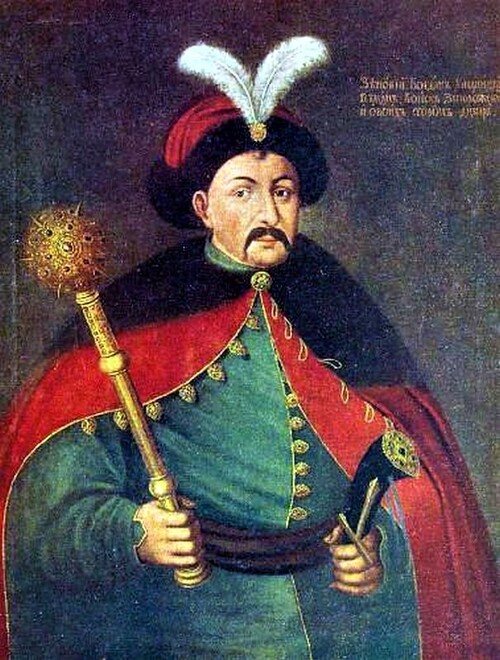
Ukraine - cossack Khmelnytsky - important part of Ukraine history
Ukraine in the whole has very complicated history. But to understand a bit better what is happening today and what are the roots of the events in the last years on this territory the events in 17th centruy are important.
In 1569, western and part of central Ukraine was annexed to Poland. The eastern part beyond the Dnieper river, thanks to the constant incursions of the Tatar hordes, was practically uninhabitable.
Under foreign rule, Ukrainians did not live very well, and the following years were full of Cossack uprisings against Poland. The largest of them was led by Bohdan Khmelnitsky in the years 1648-1654.
Bohdan Zynoviy Mykhailovych Khmelnytsky (Ruthenian: Ѕѣнові Богдан Хмелнiцкiи; modern Ukrainian: Богдан Зиновій Михайлович Хмельницький; c. 1595 – 6 August 1657) was a Ukrainian military commander and Hetman of the Zaporozhian Host, which was then under the suzerainty of the Polish–Lithuanian Commonwealth. He led an uprising against the Commonwealth and its magnates (1648–1654) that resulted in the creation of an independent Ukrainian Cossack state. In 1654, he concluded the Treaty of Pereyaslav with the Russian Tsar and allied the Cossack Hetmanate with Tsardom of Russia, thus placing central Ukraine under Russian control.
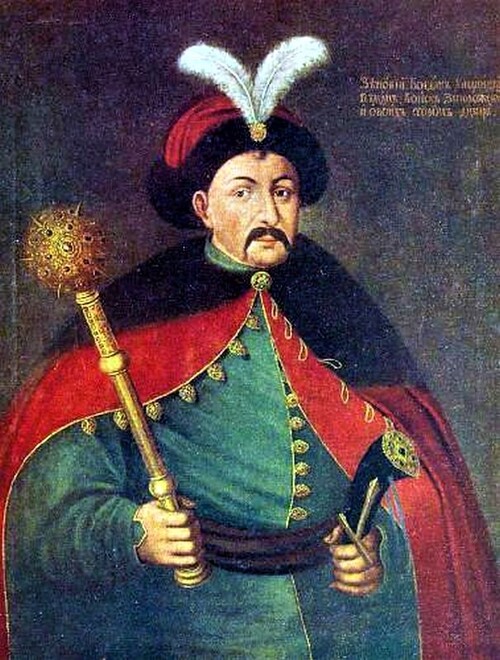
Khmelnytsky had a crucial influence on the history of Ukraine. He not only shaped the future of Ukraine but affected the balance of power in Europe, as the weakening of Poland-Lithuania was exploited by Austria, Saxony, Prussia, and Russia. His actions and role in events were viewed differently by different contemporaries, and even now there are greatly differing perspectives on his legacy.
In Ukraine, Khmelnytsky is generally regarded as a national hero. A city and a region of the country bear his name. His image is prominently displayed on Ukrainian banknotes and his monument in the centre of Kiev is a focal point of the Ukrainian capital.
Though the period did not last long it led to many important events which form the main history of Ukraine.
In 1648, after several minor storms in Ukraine, the great Cossack uprising arose from Zaporozhye Sich and was led by Bohdan Khmelnitsky. The latter managed to defeat the Polish troops in several battles in an alliance with the Crimean Tatars, which led to the formation of the Cossack hetmanate, which is usually perceived as the forerunner of Ukraine. However, he was defeated already in 1651.
In 1654, Khmelnitsky turned for help to the Russian tsar Alexei I. The aid was paid for by the Pereyaslav agreement, which entailed the loss of left-bank Ukraine, which was annexed to Russia. The fighting against Poland then continued with the support of Moscow Rus and ended only in 1667 with the peace in Andrusovo. (Left-bank Ukraine means the left bank of Dniepr river which is flowing from north to south to the Black sea - so it is the east side of Dniepr).
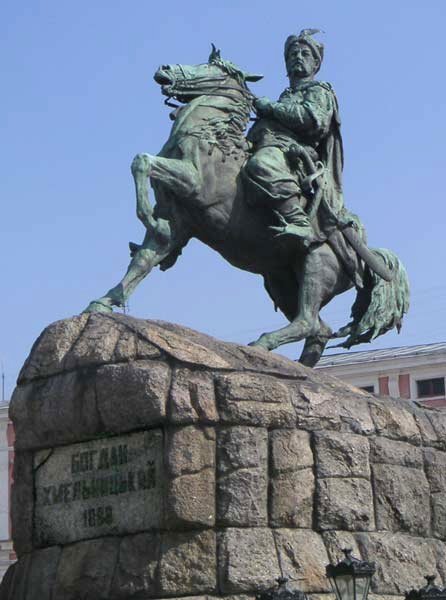 Monument in Kiev
Monument in Kiev
Bohdan Khmelnitsky sought to eradicate Jews from Ukraine. The Khmelnitsky uprising was accompanied by huge anti-Jewish pogroms. Almost 100,000 Jews in Poland, Lithuania and Belarus were victims of mass murder, but the Poles, especially the nobles, were also murdered by the enraged Cossacks.
Russian and Soviet history
The official Russian historiography stressed the fact that Khmelnytsky entered into union with Moscow's Tsar Alexei Mikhailovich with an expressed desire to "re-unify" Ukraine with Russia. This view corresponded with the official theory of Moscow as an heir of the Kievan Rus', which appropriately gathered its former territories.
Khmelnytsky was viewed as a national hero of Russia for bringing Ukraine into the "eternal union" of all the Russias – Great (Russia), Little (Ukraine) and White (Belarus) Russia. As such, he was much respected and venerated during the existence of the Russian Empire. His role was presented as a model for all Ukrainians to follow: to aspire for closer ties with Great Russia. This view was expressed in a monument commissioned by the Russian nationalist Mikhail Yuzefovich, which was installed in the centre of Kyiv in 1888.
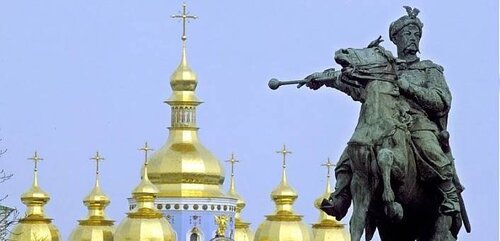
Order of Bohdan Khmelnitsky exists since May 1995
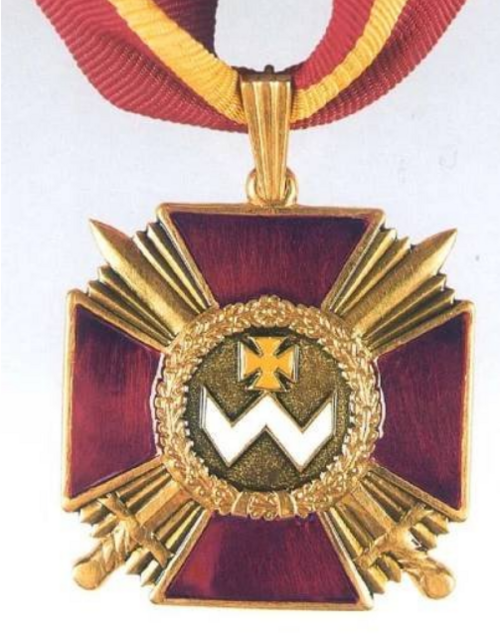
One of the main reasons why Khmelnitsky turned to Russian tsar in 1654 was the religion. Ukrainians where orthodox as Russia while Polish wanted them to convert to catholisism. The Ukrainians swore allegiance to the tsar, and the tsar, in turn, to the nation, promising to defend them before the Poles and cherish their rights and privileges. With the celebration in the streets of the city could begin. Throughout the country, the Tsar's command to swear allegiance to him and his successors spread. All this enthusiasm of the people was summed up by the solemn signing of the Pereyaslav agreement between Ukraine and Moscow Rus, which made a gigantic step forward in its history. From the day of the signing of the agreement, Ukraine, for better or worse, became part of Russia, and its fate was closely connected with it for the following centuries.
Thanks for reading
Margaret
